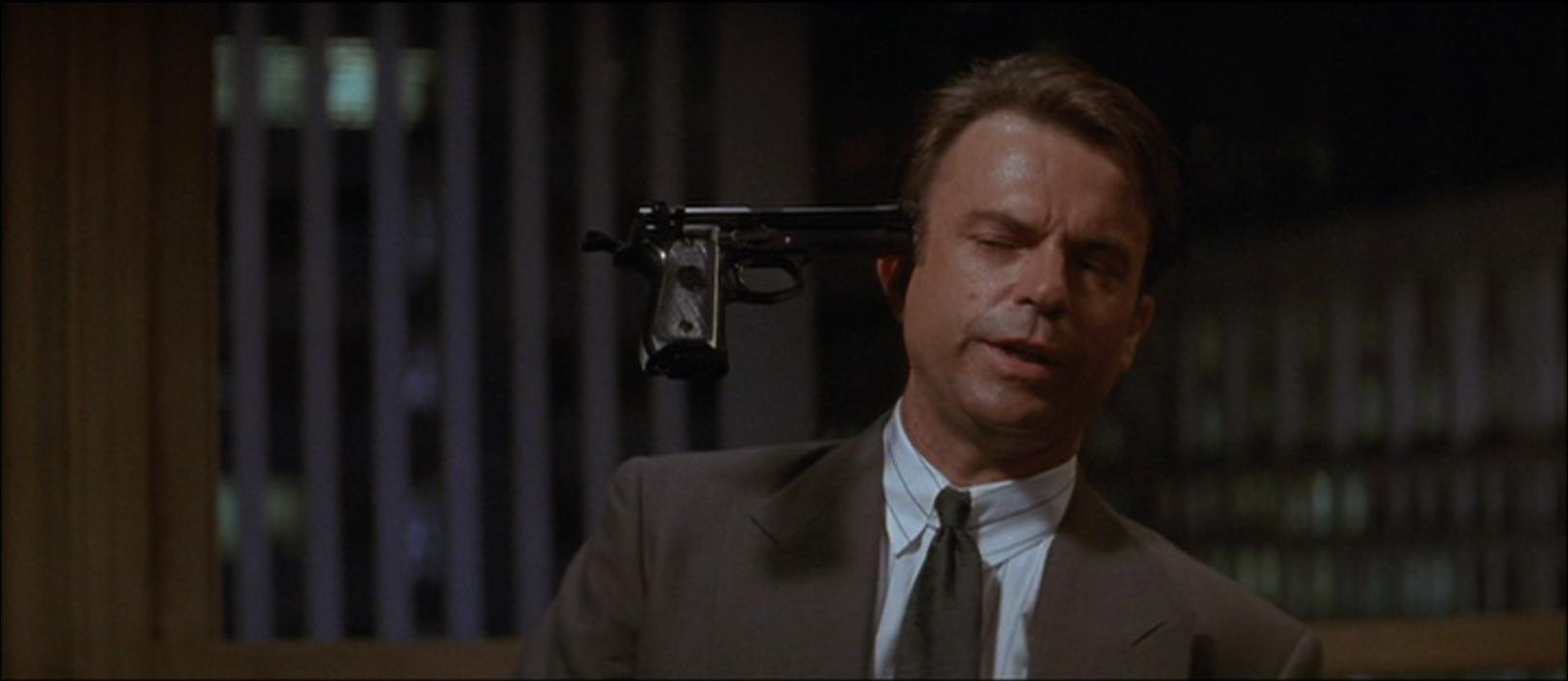Memoirs is not a movie that makes it into many John Carpenter retrospectives. It has none of the gory tension of his greatest work, and came as the great man was drifting into a straight to video sea.
Fair to say that the film is unloved. Carpenter rolls quickly past it in interviews, and there is some suggestion in the limited literature that he found his leading man a pain.
That doesn’t it mean it’s not interesting, though. Watched as a curio, Memoirs isn’t without its pleasures.
For starters, it features turns from unlikely collaborators. Chevy Chase, understandably tiring of churning out sequels (Caddyshack 2, Fletch Lives, Christmas Vacation are none of them classics) took the lead. William Goldman, searching for a way back into Hollywood after a long exile, began scripting duties (though he seems to have left the project pretty early, saying: “I’m too old and too rich for this shit”)
A great supporting cast includes Sam Neil as a preying mantis spook, and Michael McKeen as Chase’s pal. There’s also Stephen Tobolowsky (forever Groundhog Day’s “Bing!”) and Jim Norton (immortally Father Ted’s Bishop Brennan).
There are also elements unique in Carpenter’s filmography, that is slapstick and romance, however poorly handled the latter might be.
Com-Rom–Com
Like Fletch Lives, this movie is undermined, quite pointlessly, by its insistence on making Chase’s character irresistibly magnetic to beautiful women.
Chase is said to have wanted the film to have more adventure, to be less comedic than initial collaborators saw it.
Trouble is, we end up laughing at the romance too. There’s just something unforgivably absurd about the notion of this lanky spade-face seducing Daryl Hannah over the course of an evening.
Everything that follows between them feels rather hollow. This isn’t helped by the same kind of “humour” that dates other Chase fare like Fletch Lives: sleazy jokes and dream sequences, and poorly judged racial stuff. Was this actually funny to 90s audiences, or was it always lazy filler material?
Make jokes not love
The film is far more successful when it plays it for invisible laughs. All the best invisible tales, going right back to Well’s work, realise there is something inherently silly about the idea of invisibility, and has fun with it.
The real delight here is Chase slapstick. He does some great physical humour: trying to dress in invisible clothes; hailing a cab using an unconscious man as a ventriloquist dummy. These are good cheap giggles in the best possible way. As is Sam Neill acting the part of a man being led away in a headlock by the unseen Chase.
Most importantly, there’s Chase serving up one of those performances of his, breezing through the enterprise with the same slacker cool that made him. Despite all the mis-steps, he is someone we can root for.
It can’t live up to its Director’s other work, but it’s forgiven with a shrug – unlike later efforts, which many wish they could un-see.
